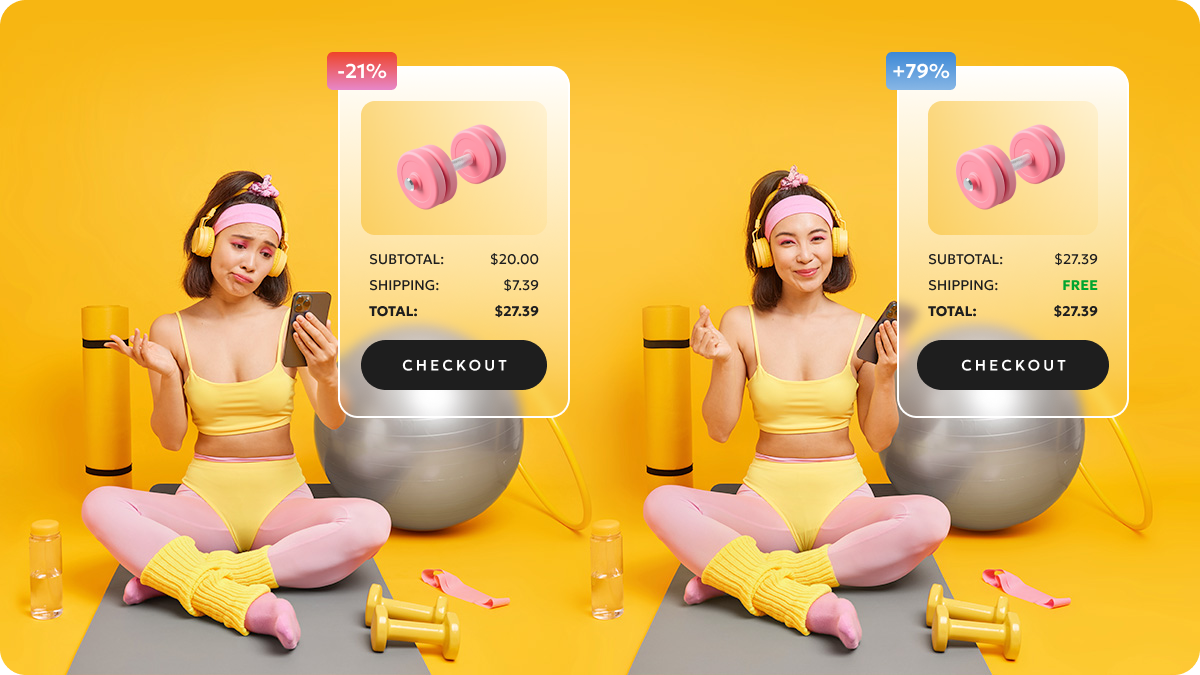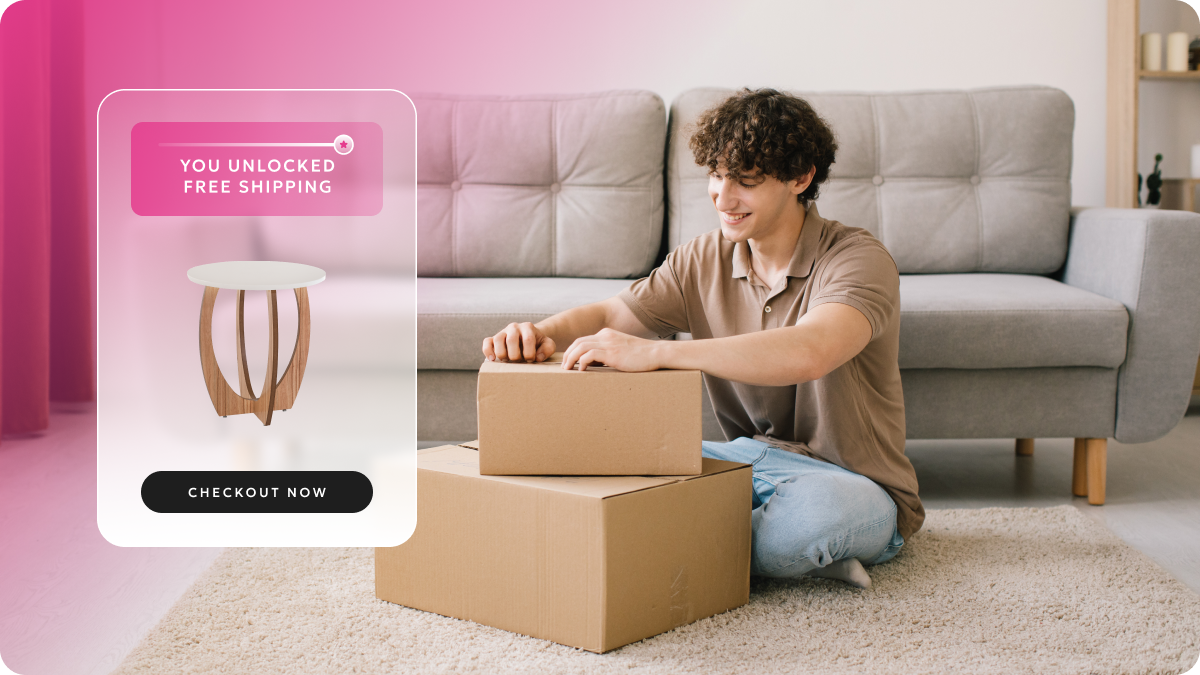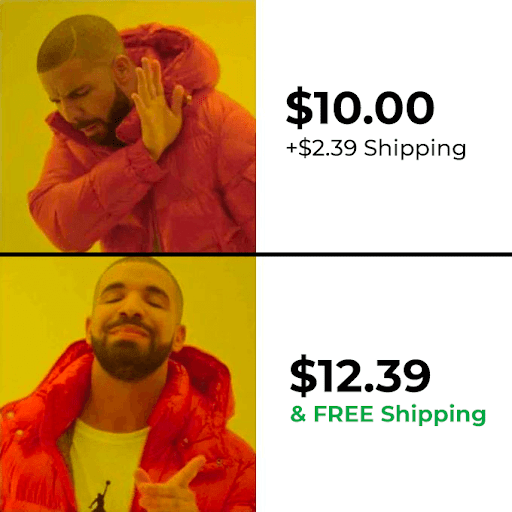Drake, he’s just like us and loves free shipping. The psychology of free shipping is perfectly depicted in the most accurate meme in the history of ecommerce. And admittedly, it resonated a little too much.
The desire for free shipping can be explained by consumer psychology. First, let’s start with the why.
Why Is Free Shipping Important?
Companies like Amazon have ignited a universal expectation with 66% of shoppers expecting free shipping from retailers. Online purchases are actually encouraged by free shipping. 79% of consumers say free shipping makes them more likely to shop. It’s because the incentive improves the online experience and removes the barrier that shipping costs create.
Most importantly, shoppers believe free shipping to be convenient, and convenience shapes shoppers’ behavior. NRF states that 9 out of 10 people are likely to choose a retailer based on convenience. With convenience shaping the future of retail, the incentive has become a necessity.
Although free shipping seems to be just for consumers, it also greatly benefits businesses. The incentive contributes to:
- Enhanced brand loyalty and awareness
- Higher average order value (AOV)
- Increased conversion rates
Arguably, percentage discounts can benefit ecommerce businesses as well. So what’s the difference between free shipping and a percentage off discount?

Free Shipping vs Discounts
Humans, in general, prefer the word “free.” Consider the following offer:
Would you prefer a free pair of socks when you buy two, or 34% off when you buy three?
You probably want the free socks. Most people do! Even though the discount would save you more money, humans don’t process fractions in the same way they process the concept of “free.”
Fractions and percentages require our brains to process something logically, which people don’t enjoy doing while shopping. Getting something for “free” is largely emotional, and highly preferable to the discount. Give us a calculator, and we’ll just hurl it at the discount and take the free socks.
Let’s explore 4 reasons that explain the logic behind consumer habits.
The Psychology of Free Shipping
1. Shoppers Fear Hidden Fees
According to Statista, 56% of shoppers abandon their online shopping carts when they encounter unexpected costs.
By clearly displaying free or discounted shipping, businesses remove the fear of hidden fees. Therefore, shoppers are subliminally pushed towards conversion.
If you offer free shipping on certain cart thresholds, let shoppers know at the start. If you don’t offer anything, be transparent about shipping costs upfront.
2. Free Shipping Reduces Friction
Shoppers are on your site for a reason…they’re interested in your product. Give them a reason to convert!
- 88% of consumers value free shipping more than fast shipping.
- 26% have abandoned their carts because they didn’t meet the free shipping threshold.
Considering these statics, shoppers are more likely to try products or make repeat purchases if the business offers free shipping.

3. Shoppers Value Convenience
Online shoppers love convenience, and we often get what we want. Consider the following services:
- Amazon Prime
- Warby Parker’s free home try-on service
- Subscription services that deliver trending items or refills
- Drive-up services at brick and mortar stores
- Food and grocery delivery
- Online booking services
It’s likely you’ve used one or more of the above services. You’ve also probably questioned why that level of customer experience isn’t found elsewhere. Once we have convenience, we expect it.
As previously stated, shoppers believe free shipping to be convenient. They are becoming accustomed to this level of convenience from countless services. This leads us to reason number four.
4. It’s a Trending Incentive
Free shipping is a way to remain competitive in an increasingly saturated ecommerce space. The incentive has been referred to as an ecommerce trend to look out for and try in the coming years.
Companies like Nordstrom and Zappos are leaders in the ecommerce industry, and they’ve offered free shipping and returns on all orders for years. Zappos even offers free next day delivery at no additional cost.
Gap and Altheta do things slightly different:
- Orders over $50 qualify for free shipping, which requires shoppers to meet a shipping threshold.
- However, every shopper gets free returns on all orders.
Gap and Altheta showcase one of the many alternatives companies can consider, and alternatives aren’t a bad thing. Remember, 30% of shoppers say they are likely to increase their order size to meet shipping thresholds.
It’s clear free shipping and their alternatives can be excellent marketing strategies with rewarding effects. Let’s take a look at 5 ways the incentive can benefit businesses.
The Benefits of Free Shipping
1. Boosts Average Order Value
If you’re not able to offer free shipping to everyone, offer a shipping threshold. Encouraging shoppers to qualify for free shipping gives businesses the opportunity to easily boost AOV.
Take a look at this example:

This example showcases a strategy used by Palm Beach Jewelry, where the brand offers shoppers free shipping on orders over $40.
Although jewelry purchases are normally over $40, Palm Beach Jewelry offers items under $40.
When the cart doesn’t quite meet the threshold, Palm Beach Jewelry displays the amount needed to qualify.
Businesses can also increase average order value by incorporating:
- Cross-sells – Recommending complementary products that align with the shopper’s purchase.
- Upsells – Highlighting premium versions of items already in the cart.
In the case of Palm Beach Jewelry, shoppers can find upsells and cross-sells adjacent to their cart.
2. Creates Personalized Experiences
Companies can recommend best sellers, new arrivals, or personalized products to help shoppers meet the shipping threshold. Even if a threshold isn’t required, businesses can still recommend products to boost AOV.
Take a look at the example below:

This example illustrates a strategy used by Virtue Labs, where the brand invites shoppers to “complete your regimen” by suggesting two shampoos and a serum to go with the conditioner in their cart.
If shoppers were visiting Virtue Labs with the intent to purchase only the conditioner, their website brings attention to supplemental products and instills the idea to purchase a complete regimen.
Although new arrivals and best sellers are valid items to recommend, adding a touch of personalization goes a long way. After all, advanced product recommendations mean more revenue.
3. Increases Customer Retention
A survey conducted by Material Handling and Logistics found that 91% of shoppers are likely to become repeat customers if a business offers free shipping. This means the incentive actually increases brand loyalty.
The incentive can also be used to build loyalty programs. For example, Madewell offers free shipping and returns for Madewell Insiders, but charges for shipping and returns to all other shoppers.

Madewell requires an email address and a few pieces of personal information, but there is no fee to join. If 60% of shoppers expect free shipping, they will likely join a loyalty program to receive the perks.
Alternatively, brands like Amazon Prime charge an annual fee. However, by the end of 2019, Amazon Prime had an estimated 112 million members. And that’s just in the United States. Clearly, the benefits outweigh the cost for some programs.
4. Builds Brand Awareness
Free shipping taps into consumer psychology creating an emotional connection between online shoppers and online retailers. When customers are emotionally connected to a brand, they recommend that brand to others at a much higher rate.
75% of consumers trust their friends more than any other source for shopping recommendations. That means word of mouth advertising is still an extremely valuable source of marketing.
So if you already provide a top notch customer experience and exceptional customer service, add free shipping to the mix. Give shoppers another reason to recommend your brand to their friends, family, and colleagues.
5. Reduces Coupon Hacking
41% of shoppers use coupons or discounts as a leading reason to make a purchase online. If an online retailer is not offering unique coupon codes, shoppers could potentially find additional promo codes in their search for a shipping incentive.
By removing shipping costs or discounting shipping charges, retailers can:
- Keep shoppers on-site.
- Reduce the risk of coupon hacking.
- Minimize shopping cart abandonment.
6. Reduce Abandonment Rates
If shoppers start to abandon your site in search of coupons or better deals, leverage free shipping at the point of abandonment. If you can’t give free shipping to all shoppers, this is your time to offer it. It’s better to lose a few dollars in shipping than lose the sale altogether.
In our Fashion Case Study, we convert 8.3% more shoppers by reiterating free shipping offers at abandonment. Even though shoppers had already seen the offer, presenting it in a new light intrigued them enough to remember the deal they’re getting and continue their purchase.
The Trending Incentive
It’s clear the shipping incentive is now expected, but there’s no limit to the ways the incentive can be offered.
The psychology of free shipping is beneficial to businesses who use the incentive as a marketing tool. For online retailers, removing shipping charges can enhance customer loyalty, boost average order values, and spread brand awareness.
Looking for More Ways to Increase Your Conversions?
Check out UpSellit’s Fashion Case Study to learn how we help fashion retailers increase conversions and provide a 5.7% incremental lift.

